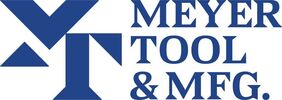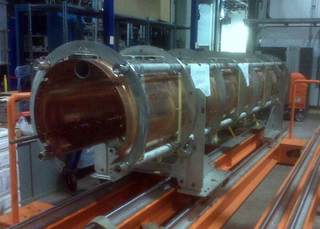Call: 708-425-9080
SPAFOA Meeting at the Spallation Neutron Source
April 16, 2010
|
On March 18, 2010 the Superconducting Particle Accelerator Forum of the Americas (SPAFOA) hosted their member meeting at the Spallation Neutron Source (SNS) at the Oak Ridge National Laboratory. Ed Bonnema, Vice President of Meyer Tool & Mfg., Inc. and also a member of SPAFOA’s Board of Directors attended the meeting, along with a number of other SPAFOA members both in person and via WebEx.
SPAFOA’s mission is to provide a partnership between industry and government funded Superconducting Radio Frequency programs during their design, component prototyping, manufacturing, siting and installation. Meyer Tool supports SPAFOA’s goal of fostering the industrialization of technologies related to superconducting radio frequency cavities. The meeting was facilitated by the Director of the Research Accelerator Division at the SNS, Dr. Stuart Henderson. Four presentations were made by SNS personnel. Dr. Henderson gave an overview of the SNS, its mission and progress to date. John Galambos, Group Leader Accelerator Physics, reviewed the superconducting Linac operation and performance. John Mammosser, Cryogenics Group Leader, discussed cryomodule and facility requirements as related to the planned power upgrade project. Barbara Thibadeau, Upgrade Project Manager, reviewed the present plans for the Upgrade Project and potential procurement strategies for key components. Their PowerPoint presentations will be available on the SPAFOA website. |
After the presentations and a lunch in the newly opened SNS cafeteria, the SPAFOA members were given a tour of the SNS facilities by Director Henderson and Mr. Mammosser.
SNS is an intense-pulsed neutron source located at the Oak Ridge National Laboratory in Tennessee. The SNS was built by a partnership of six US Department of Energy laboratories and was completed in 2006. The mission of the SNS is to provide the most powerful intense-pulsed neutron beams in the world for research and industrial development.
Since its completion, the SNS has been undergoing commissioning and ramping up of its performance. Initial beam power has increased from around 5 kilowatts to 1 megawatt while availability has increased to 85 percent and the beam energy from 840 MeV to 930 MeV. With the planned upgrade, beam power will be increased to 1.3MW by 2015.
For those interested in how the Spallation Neutron Source works please visit this link.
The SNS research focus is on materials, biotechnology, energy, nanotechnology and magnetism. Neutron scattering is yet another accelerator-based tool used to discover information about the internal properties of materials. When the SNS’s neutron beam passes through a sample, some of the neutrons interact with the atomic nuclei and "bounce" away at an angle. This behavior is called neutron diffraction, or neutron scattering. Using detectors, the scattered neutrons are counted and measured. Scientists use this information to determine the internal structure and nature of materials. Armed with this knowledge, new materials, medicines and techniques that ultimately benefit our everyday lives can be developed.
SNS is an intense-pulsed neutron source located at the Oak Ridge National Laboratory in Tennessee. The SNS was built by a partnership of six US Department of Energy laboratories and was completed in 2006. The mission of the SNS is to provide the most powerful intense-pulsed neutron beams in the world for research and industrial development.
Since its completion, the SNS has been undergoing commissioning and ramping up of its performance. Initial beam power has increased from around 5 kilowatts to 1 megawatt while availability has increased to 85 percent and the beam energy from 840 MeV to 930 MeV. With the planned upgrade, beam power will be increased to 1.3MW by 2015.
For those interested in how the Spallation Neutron Source works please visit this link.
The SNS research focus is on materials, biotechnology, energy, nanotechnology and magnetism. Neutron scattering is yet another accelerator-based tool used to discover information about the internal properties of materials. When the SNS’s neutron beam passes through a sample, some of the neutrons interact with the atomic nuclei and "bounce" away at an angle. This behavior is called neutron diffraction, or neutron scattering. Using detectors, the scattered neutrons are counted and measured. Scientists use this information to determine the internal structure and nature of materials. Armed with this knowledge, new materials, medicines and techniques that ultimately benefit our everyday lives can be developed.




